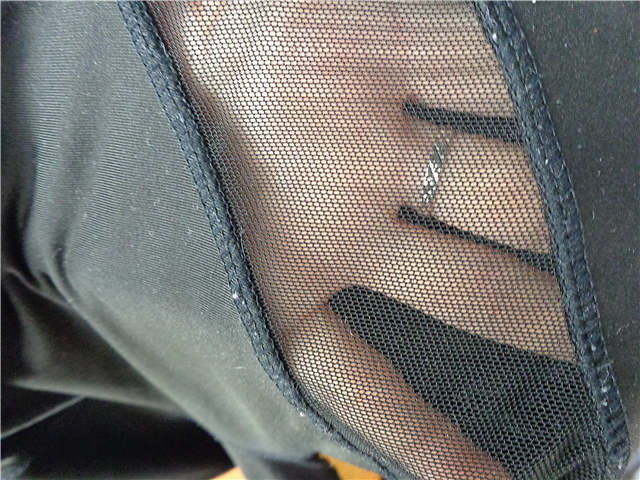Most CrossFit athletes are busy developing their strength indicators and do not pay enough attention to such an important point as breathing technique during exercise. Dr. Jill Miller has studied human anatomy and movement for over 27 years. She has worked on the links between fitness, yoga, massage and pain management. Jill is the author of The Roll Model: A Step-by-Step Guide to Managing Pain, Improving Your Body Mobility and Life.
“The breathing process is automatic. A person breathes in and out about 20,000 times a day, says Miller. - Think about what it would be like if you did 20,000 burpees with bad technique in a day. What would happen to your body in this case? We are born with perfect breathing. But over the years this technique has deteriorated for most people. Breathing is a fundamental movement that provides both mental control and mental acuity. ”
Dr. Miller believes that the athlete who practices the correct breathing technique has a performance advantage. “When overwhelming competitive pressures are holding you back, proper breathing will help you deal with any challenge,” advises Jill.

How to breathe correctly?
The bad news first: in order to breathe properly, you have to swell your belly. Shallow, rapid breathing, which uses the chest rather than the diaphragm, prevents the body from getting as much oxygen as the body needs. Shallow breathing leads to an increase in heart rate, which in turn causes stress, anxiety, and can raise blood pressure.
Breathing mechanism
As you inhale, the abdomen expands and the diaphragm contracts, freeing up space in the chest cavity for the air-filled lung. This results in a decrease in pressure, allowing air to flow freely into the lungs. Exhalation brings the diaphragm back to its original position.
With shallow chest breathing, you do not free up enough space and cannot fill your lungs as fully as you can with deep belly breathing. We are born, on a subconscious level, knowing how to breathe in the belly. Babies do this instinctively, expanding their belly with each breath. Watch the video of newborn babies breathing.
Muscle work while breathing
Dr. Miller said that when we suck in the abdomen while breathing, we maintain tension in the transverse muscle, which runs along the front and side of the abdominal wall, deeper than the rectus muscles.
The transverse abdominal muscle is sutured into the same fascial tissue as the respiratory diaphragm. Thus, the diaphragm can be viewed as the end of the transverse abdominal muscles, says Miller. - The respiratory diaphragm is attached to these abdominal muscles and can only move as much as they allow. If your abs are constantly tense, the diaphragm cannot pass through its range of motion. And this is extremely important while inhaling.
When the diaphragm is lowered, the belly swells up and becomes like a baby's belly in toddlers. When exhalation occurs, the diaphragm rises back to the ribs and hides under them, and the abdomen remains the same.
If you press on your stomach or tighten your weightlifting belt, you can feel the movement of your diaphragm being suppressed. At the same time, the heart “sits” on top of the diaphragm. Jill Miller calls the diaphragm the “heart mattress”.
The harm of improper breathing
Shallow chest breaths do not move the heart with the necessary force. Your heart and respiratory tissues are interconnected. When there is excessive tension in any tissue of the body, it interferes with its normal functions.
A restricted diaphragm that does not move properly reduces the effectiveness of the natural assistance it provides for the vena cava to help improve blood flow. This is your main vein, which connects directly to your heart.
Chest breathing, which occurs when you lift your shoulders up to your ears and do not fill your stomach, is a breathing characteristic of a person during times of stress - in fright or after a difficult physical exertion. “You can observe this breathing pattern all the time in some athletes in athletes. They run back and forth across the arena, and when they run out of breath, they kneel down, and, with their heads down, try to catch their breath. At this point, you can watch their shoulders rise to their ears, ”says Miller.
It works when we struggle to catch our breath during or at the end of a difficult workout. But this type of breathing cannot be replaced with full movements of the diaphragm.
During training, athletes often use chest breathing. Athletes need to constantly keep their abs tense, and belly breathing is not always possible. Imagine that you are trying to inhale deeply with your stomach, pressing hard on it. At times like these, athletes must expand their ribcage to lift air while supporting the spine with their core muscles.
Unfortunately, most of us subconsciously use shallow chest breathing while hunched over a computer or phone. “This false collarbone breathing is common to all of us. Many of us breathe in this way day after day, without even thinking about the consequences, says Dr. Miller. "But if you are a real athlete, then sooner or later you will have to think about not breathing, constantly raising your collarbones, since this type of breathing does not provide the body with the required amount of oxygen."
The effectiveness of deep breathing
Diaphragmatic breathing helps the body by channeling more oxygen to the muscles, improving muscle endurance. Another benefit of deep breathing is that it relaxes the body. Anyone who has tried a tricky gymnastic exercise or another weightlifting movement while under stress knows the benefits of complete relaxation.
But how do you get rid of the wrong breathing habit that you have been practicing for most of your life?
- You need to start experimenting with breathing outside of the gym, or at least not right in the middle of your workout. For example, you might visit a yoga class a few times - it's a good place to learn and practice breathing techniques.
- If yoga is not yours, then, as odd as it sounds, singing or joining a choir can also correct the habit of wrong breathing. "You will probably discover phenomenal breathing techniques, and if you enjoy singing, it will really bring you pleasure," Miller says of singing lessons.
- Well, you can also practice, for example, blowing up holiday balloons. You just need to do this, strictly controlling your breathing movements.

How to deliver diaphragmatic breathing?
To deliver diaphragmatic breathing, the technique of which is very simple, follow the instructions below:
- Lie on your back.
- Place one hand on your chest and the other on your stomach. Breathe in slowly and deeply through your nose, making sure you can feel with your hand how your stomach moves.
- Exhale through your mouth. The hand that lies on the chest should not move too much.
After you put diaphragmatic breathing in the supine position, practice the breathing technique while sitting in a chair. Once you've practiced this breathing style at home, start incorporating it into your workouts.
Dr. Miller suggests at least at first focusing on a portion of your workout to observe how your body breathes in response to exercise and during rest. You may need to use deep abdominal breathing from time to time for best results, but chest breathing is more appropriate for some exercises.
“Just allow yourself to exercise by constantly watching you breathe every time you do something. This is usually done by yogis during classes. It's an incredible way to sharpen your mind and become familiar with your breathing behavior, ”advises Jill Miller. The doctor also recommends that you pay as much attention to breathing technique as you can during your workout, using it to stabilize during a heavy lift or to calm down during rest.
At first, it will be difficult for you to simultaneously monitor the technique of performing the exercise and the correctness of breathing at this moment. But try to make every effort to bring your breathing technique to a new quality.

Airway training
Another way to observe and control your breathing is to try airway training.
The simplest version of breathing exercises is doing a ladder of reps. Its essence is that after each circle of exercises, a similar number of deep, controlled breaths follow.
Most often, kettlebell swings are used as an exercise for such breathing exercises, but you can choose other crossfit exercises. The breathing ladder, connected to the kettlebell swings, begins with one swing, followed by one breath, then two kettlebell swings and two breaths. You can breathe as much as you like while you swing the kettlebell, but take only the prescribed number of breaths while resting. Thus, eight reps are followed by only 8 breaths, and then you return to the kettlebell.
If enough reps are done, the breathing ladder will cause panic breathing. Being aware of this type of breathing and learning how to control it is valuable if you find yourself in a situation where you need to recover your breathing after intense exertion. This is where the correct breathing technique comes in handy.
Breathe deeply while doing the breathing staircase, and resist the temptation to switch to shallow, panicky breathing, even when stressed. Then see if you can improve your breathing and avoid panic breathing during subsequent workouts.
And the last piece of advice: if you walk into the hall and see some terribly complex complex on the board, don't panic. Take 10 deep breaths and go into battle!









